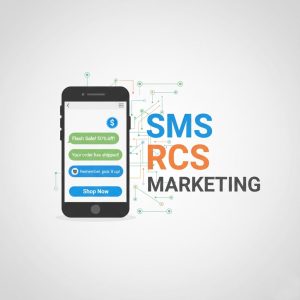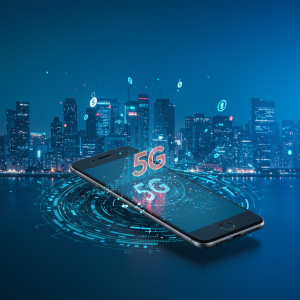Unlocking Success by Solving Gamification Marketing Challenges

Gamification has become a discussion over the past decade, and marketing good reasons. It is a powerful tool that converts marketing campaigns into attractive, interactive experiences. Whether it is a loyalty program, a mobile app with pragati bar or playful rewards in the app, Gameification can run customer engagement, promote brand loyalty and increase the conversion.
But when the concept of transforming marketing into a game seems simple, there is often no execution. Many brands stumble upon challenges that prevent the gaming campaigns from achieving success.
This post faces the most common challenges when marketers face when using verification and provides action -rich solutions to remove them.
The Appeal of Gamification in Marketing
Gamification has become a discussion over the past decade, and marketing good reasons. It is a powerful tool that converts marketing campaigns into attractive, interactive experiences. Whether it is a loyalty program, a mobile app with pragati bar or playful rewards in the app, Gameification can run customer engagement, promote brand loyalty and increase the conversion.
But when the concept of transforming marketing into a game seems simple, there is often no execution. Many brands stumble upon challenges that prevent the gaming campaigns from achieving success.
has gained so much traction. At its core, gamification taps into basic psychological principles:
- Motivation: People are more likely to participate when there’s an incentive, whether it’s a reward or a sense of accomplishment.
- Engagement: Interactive activities grip users’ attention much better than static content.
- Social Connection: Gamification often leverages competition, teamwork, or sharing, fostering a sense of community.
For example, Nike’s Nike+ Run Club app uses gamification to inspire athletes. By tracking personal performance, awarding badges, and offering social features, Nike creates a dynamic, engaging app experience that keeps users returning. However, achieving that level of success doesn’t come without its hurdles.
Challenges in Gamification Marketing
1. Aligning Gamification with Business Goals
The Challenge
One of the most common mistakes brands make is adopting gamification solely because it’s trendy, without connecting it to their broader marketing or business objectives. A gamified campaign might engage users temporarily, but if it doesn’t lead to meaningful outcomes, it’s just fluff.
The Solution
Start with your end goals. Are you looking to increase sales, build brand awareness, or drive more app downloads? Define clear metrics that you’ll use to measure success. For instance:
- If your goal is to improve customer loyalty, create a rewards program tied to repeat purchases.
- For brand awareness, consider contests that encourage users to share branded content.
Activities should always reflect your goals, ensuring your gamified experience is more than just a gimmick.
2. Designing for Different Audiences
The Challenge
A gamified experience that works for one audience might completely flop with another. Designing games that resonate with everyone in your customer base is next to impossible.
The Solution
Get to know your audience. Conduct surveys, social media polls, or focus groups to uncover their preferences and motivators. Once you’ve gathered insights, segment your audience. For example:
- Younger, tech-savvy customers may prefer competitive games like leaderboards.
- Professional audiences might enjoy learning-based gamified tools.
Customization is key. Personalizing the gamified experience for different audience segments will ensure success across demographics.
3. Keeping Engagement Sustained
The Challenge
Gamification often sparks short-term excitement, but many campaigns fizzle out after the novelty wears off.
The Solution
Create a gamified strategy that evolves over time. Consider introducing:
- Levels and Progression: Reward users for completing tasks by unlocking new features or benefits as they progress.
- Time-Limited Challenges: Keep users coming back with seasonal or time-sensitive events.
- Dynamic Rewards: Avoid monotony by offering varied incentives that increase in value or emotional appeal.
For instance, Duolingo keeps its language-learning experience engaging by adding daily streaks, leagues, and special seasonal challenges that motivate users to keep coming back.
4. Overcomplicating the Experience
The Challenge
Some brands overthink their gamification strategies and create games that are too complex for their audience. The result? Frustration and high dropout rates.
The Solution
Simplicity is everything. Your gamified experience should be easy to access, understand, and enjoy. Follow these principles:
- Test your campaign with a beta group to identify pain points.
- Use clear instructions and an intuitive interface.
- Avoid excessive rules or too many layers of gameplay.
Remember, the goal of gamification is to enhance the user experience, not add unnecessary friction.
5. Measuring Success Effectively
The Challenge
Marketers often struggle to measure the success of their gamification campaigns due to a lack of clear KPIs (key performance indicators) or tracking systems.
The Solution
Define your KPIs before launching your campaign. Common metrics include:
- Click-through rates (CTRs) for gamified content
- Increase in user engagement (e.g., time spent on site or app sessions)
- Conversion rate improvements
- Retention rates for returning users
Leverage analytics tools like Google Analytics, mobile app trackers, or in-app data to monitor user behavior and results. By using performance data, you can refine your strategy for better outcomes.
6. Staying True to the Brand Identity
The Challenge
Gamification can go off the rails when it feels disconnected from a brand’s identity. For instance, a luxury watch brand running a cartoonish competition risks alienating its clientele.
The Solution
Ensure your gamified campaign aligns with your brand voice. Use visual elements and tone that reflect your identity, and tailor the user experience accordingly. For example:
- For a playful brand like Taco Bell, humorous campaigns and colorful visuals feel on-brand.
- For a premium brand like Rolex, sleek and elegant designs paired with exclusive rewards feel more fitting.
Gamification works best when it authentically ties into your brand story.
7. Budget Constraints
The Challenge
Developing an engaging, high-quality gamified experience can become expensive, especially for smaller organizations.
The Solution
You don’t have to go all-in with full-fledged app development to create a successful gamification campaign. Start with manageable features like:
- Points or Badges Systems: Reward users for simple achievements such as purchases or email sign-ups.
- Interactive Quizzes or Polls: These can be created easily using free or budget-friendly tools.
- Social Media Challenges: Encourage participation through user-generated content, which is cost-effective.
Start small, test your ideas, and scale them based on results and ROI.
Getting Gamification Right
While gamification comes with its share of challenges, the rewards of a well-executed campaign far outweigh the risks. By thoughtfully designing experiences that reflect your brand identity and target audience’s needs, you can turn curiosity into engagement and casual customers into loyal advocates.
Now it’s your turn to join the gamification movement. What’s your next step? Whether you’re a marketer or brand manager, addressing these challenges can set your campaigns apart in an increasingly competitive landscape.





